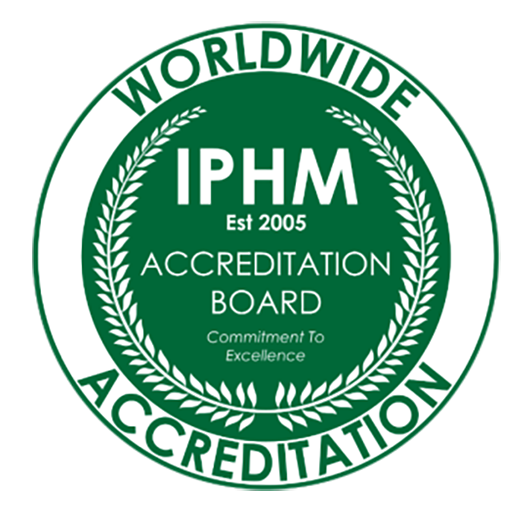Testosterone can positively affect your strength, libido, sexual performance, and mood. However, if taken to excess, there are risks to your health.
Monitor and manage your testosterone replacement therapy (TRT) treatment by testing for hormones in your blood.
Testosterone can positively affect your strength, libido, sexual performance, and mood. However, if taken to excess, there are risks to your health.
By checking your testosterone, free testosterone (calculated), oestradiol, prolactin, and SHBG, you can see if your hormones remain balanced to help you monitor and manage your TRT treatment.
We recommend taking this test before starting TRT and six months after for monitoring purposes
We recommend taking this test before starting TRT and six months after for monitoring purposes.
Our test also includes testing your Prostate Specific Antigen (PSA) level. Whilst research shows that it is unlikely that TRT increases the risk of prostate cancer, caution is warned – particularly if you already have prostate cancer. The PSA marker can help to detect prostate cancer earlier. However, it has several shortcomings when used as a screening test. Besides being increased by prostate cancer, urinary tract infection, recent ejaculation, and even some forms of exercise can also raise PSA.
Currently, the most reliable way of deciding whether someone has a true positive or false positive is by performing a prostate biopsy. Because the PSA test has a high false positive rate, many of these prostate biopsies will have been unnecessary.
There is a risk of PSA being positive when no cancer is present (a false positive). If we take 100 men with a high PSA result, then approximately 75 of them will have a false positive result, and 25 will have a true positive (i.e. they will have prostate cancer). PSA tests can also cause false negative results. This means that the PSA is in the normal range, but the person has underlying prostate cancer. PSA levels can remain normal in the initial stages of prostate cancer, providing false reassurance. If we test 100 men with prostate cancer, then approximately 15 would have a normal PSA result (a false negative). In some cases, prostate cancer grows very slowly, and it may never cause symptoms or shorten lifespan, so a considerable proportion of the men who receive a true positive result may undergo surgery they did not need.
Prepare for your TRT (Testosterone Replacement Therapy) Blood Test by following these instructions. Please take your sample before 10am. Avoid heavy exercise for 48 hours beforehand. Please avoid ejaculating for 48 hours prior to this test. Hormonal contraception can affect this test, taking a break from this and using barrier contraception will give more accurate results. If you use hormone gels, pessaries, patches, or tablets, we strongly recommend selecting a venous sample to minimise contamination.
Platelets or clotting cells are the smallest type of blood cell. They are formed in the bone marrow and are important in blood clotting. When bleeding occurs, the platelets swell, clump together and form a sticky plug (a clot) which helps stop the bleeding.
MPV, or Mean Platelet Volume, is a measurement of the average size of your platelets. Platelets are fragmented cells within the blood that aid the process of clot formation. MPV provides an indication of platelet production in your bone marrow.
Oestradiol is a female steroid hormone, produced in the ovaries of women and to a much lesser extent in the testes of men. It is the strongest of three oestrogens and is responsible for the female reproductive system as well as the growth of breast tissue and bone thickness. In pre-menopausal women, oestradiol levels vary throughout the monthly cycle, peaking at ovulation. In women, oestradiol levels decline with age, culminating with the menopause when the ovaries stop producing eggs. Low oestradiol can cause many symptoms associated with the menopause, including hot flushes, night sweats and mood swings. Low oestradiol can also cause osteoporosis.
Testosterone is a hormone that causes male characteristics. For men, it helps to regulate sex drive and has a role in controlling bone mass, fat distribution, muscle mass, strength and the production of red blood cells and sperm. Testosterone is produced in the testicles of men and, in much smaller amounts, in the ovaries of women. Testosterone levels in men naturally decline after the age of 30, although lower than normal levels can occur at any age and can cause low libido, erectile dysfunction, difficulty in gaining and maintaining muscle mass and lack of energy. Although women have much lower amounts of testosterone than men, it is important for much the same reasons, playing a role in libido, the distribution of muscle and fat and the formation of red blood cells. All laboratories will slightly differ in the reference ranges they apply because they are based on the population they are testing. The normal range is set so that 95% of men will fall into it. For greater consistency, we use the guidance from the British Society for Sexual Medicine (BSSM) which advises that low testosterone can be diagnosed when testosterone is consistently below the reference range, and that levels below 12 nmol/L could also be considered low, especially in men who also report symptoms of low testosterone or who have low levels of free testosterone.
Most testosterone circulating in the blood is bound to proteins, in particular SHBG and albumin; only 2-3 % of testosterone is free and available to cells. This test uses an algorithm to calculate the level of free or unbound testosterone in relation to total testosterone, SHBG and albumin.
Prolactin is a hormone which is produced in the pituitary gland and plays a role in reproductive health. Its primary purpose is to stimulate milk production after childbirth, and in pregnant and breastfeeding women prolactin levels can soar.
Prostate Specific Antigen (PSA) is a protein which is released into the blood by the prostate gland. Prostate cancer can raise PSA levels but a PSA test in isolation is not to be relied upon to diagnose prostate cancer, as levels can be raised in benign prostate disorders (a false positive). There is also the potential for PSA levels to be normal despite the presence of prostate cancer, this is called a false negative.
Total Protein represents the sum of the protein’s albumin and globulin in your blood. Albumin and globulin have a range of functions including keeping blood within vessels, transporting nutrients and fighting infection. Abnormal levels can indicate malnutrition as well as a liver or kidney disorder.
Albumin is a protein which is made mainly in the liver. It helps to exert the osmotic pressure which holds water within the blood. It also helps carry nutrients and medications and other substances through the blood and is important for tissue growth and healing. Albumin also carries hormones around the body, therefore measuring the amount of albumin in the blood can help us calculate how much hormone is available to your tissues.
Globulin is an umbrella term for a set of different proteins that the immune system and the liver produce. Certain globulins bind with haemoglobin while others transport metals, such as iron, in the blood. Additionally, there is a certain type of globulin known as an immunoglobulin, (another name for an antibody) which helps to fight infection in the body.
SHBG (sex hormone binding globulin) is a protein which transports the sex hormones (testosterone, oestrogen and dihydrotestosterone (DHT)) in the blood. Hormones which are bound to SHBG are inactive which means that they are unavailable to your cells. Measuring the level of SHBG in your blood gives important information about your levels of free or unbound hormones which are biologically active and available for use.
Haemoglobin is a protein in red blood cells which carries oxygen around the body and gives the blood its red colour. This test measures the amount of haemoglobin in the blood and is a good measure of the blood’s ability to carry oxygen around the body.
HCT (haematocrit) measures the amount of space (volume) within the blood that is taken up by red blood cells.
Red Blood Cell (RBC) Count analyses the number of red blood cells in the blood. Red blood cells carry oxygen from the lungs to the rest of the body, where it can be used to fuel energy processes such as movement and respiration. They also carry carbon dioxide produced from cells back to the lungs so that it can be exhaled.
MCV (mean corpuscular volume) reflects the average size of your red blood cells. This is important to measure, as it can indicate how much oxygen your cells are likely to be transporting around the body.
MCH (mean corpuscular haemoglobin) measures the average amount of haemoglobin contained in one of your red blood cells.
MCHC (mean corpuscular haemoglobin concentration) is the average concentration of haemoglobin in your red blood cells. Haemoglobin is a molecule which allows red blood cells to transport oxygen around the body.
Red blood cell distribution width (RDW) indicates whether your red blood cells are all the same size, or different sizes or shapes. Normally cells are uniform both in size and in shape, but some blood disorders may cause your red blood cells to form in abnormal sizes. This test measures the difference between the largest and the smallest red blood cell.
White Blood Cell (WBC) Count measures the number of white blood cells in the blood. White blood cells are key to your body’s immune system. They fight infections and protect your body from foreign invaders such as harmful germs and bacteria. Additionally, they produce many antibodies and memory cells to protect you from further infections with the same germ.
Neutrophils are the most abundant type of white blood cell in the body and are responsible for helping your body fight infection. When a germ is initially detected by the body, neutrophils are the defence system which go out and attack the germ before any of your other white blood cells. When neutrophils are low you can be more vulnerable to illness and infection.
Lymphocytes are a type of white blood cell which fight bacterial and viral infections. They are the subset of white blood cells involved in the more specific response to infections, which can identify and differentiate between different foreign organisms that enter the body. As well as fighting infection, they produce antibodies and memory cells to help to prevent future infections from the same germ. Lymphocytes include T cells, B cells and natural killer cells.
Monocytes are a type of white blood cell that surround and destroy germs and dead or damaged cells from the blood. The heat and swelling that you feel when a body part is inflamed, for example after a cut on your finger, is caused by the activities of these cells.
Eosinophils are a type of white blood cell that are responsible for removing parasitic infections and regulating inflammation to mark an infected site. They also play a role in allergy and in asthma.
Basophils are a type of white blood cell that protect your body from bacteria and parasites such as ticks. They also play a role in allergic reactions.


Vita Health Clinic Ltd 2023. Company registered number: 15275009. Registered Address: 22a Park Road, Bingley, West Yorkshire, BD16 4JD
Financial Conduct Authority, registration number 978517. Credit is subject to status.
Get in touch by making inquiries on services or products you’d like to know more about or compare.